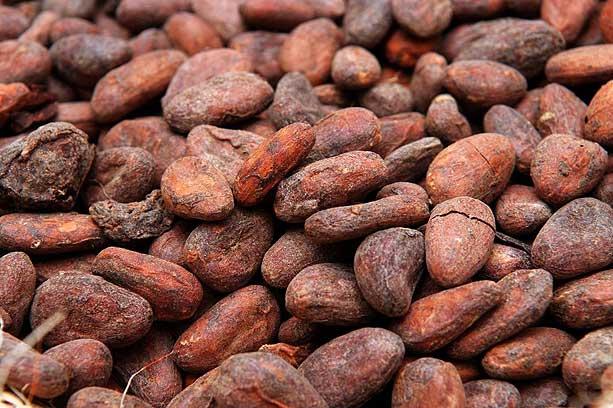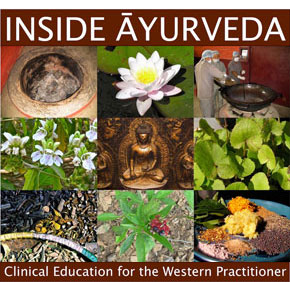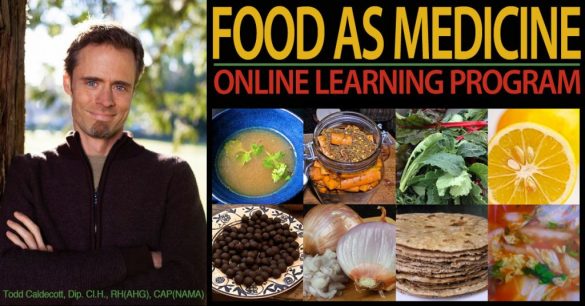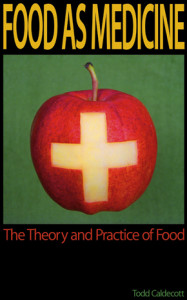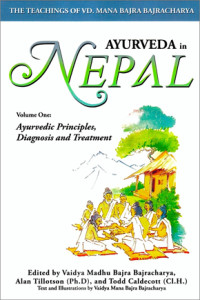I recently answered this question on the Food As Medicine website: One of the subjects folks seem to be interested in these days is raw cacao nibs. They can be found in health food stores often sold for very high prices, the packaging and marketing exuding with confident exclamations that raw cacao nibs are indeed theobroma – the ‘food of the gods’. And it is true: the name Theobroma is a Latin, scientific epithet meant to capture the traditional importance of cacao in Meso-American culture. Cacao was essentially a kind of currency for the Aztecs, Mayans and other Meso-American groups, as well as a sacred beverage and general health tonic. Like tea and coffee, the popularity of chocolate quickly spread throughout the West after the Spanish, Swiss and especially the Dutch got hold of it, mixing it with varying amounts of sugar and condensed milk that forms the more familiar form of chocolate we all know.
One of the key elements of today’s cacao marketing push is this idea that “raw” cacao nibs are supposed to be better for you. Like many grains and legumes such as wheat and soy, cacao has polyphenols that are sometimes thought to be “good” for us, despite the fact that they are typically reduced when these foods are processed according to traditional methods of preparation including fermentation and roasting. While it may be that a little bit of these polyphenols are good for us, in upcoming book, Food As Medicine: The Theory and Practice of Food, I describe how these and other antinutrient factors (ANFs) interfere with nutrient absorption by binding with minerals, as well as promote inflammation in the gut. Fermenting cacao with naturally occurring microorganisms helps to break down these ANFs. In the traditional processing of cacao, once the beans were fermented they were cleaned and laid out to dry. While many of the microorganisms involved in fermentation are harmless, the beans are often contaminated with fungi such as Aspergillus that produce cancer-causing mycotoxins. What I find fascinating is that traditional Meso-Americans somehow figured this out, and found that by roasting the cacao beans over a slow fire, they could improve the quality of chocolate, not only inhibiting microbial contamination, but by breaking down anti-nutrient factors that could otherwise impair health. Roasting cacao is much like roasting coffee – some like it more roasted, some like less – people will even drink it from a cat’s bum; but they never drink it green, even if it contains polyphenols… it has no flavor.
Which brings us to the current “raw cacao nib” thang that I hear sooo much about. For one thing, I really wonder if these products are actually raw, and just what “raw” is supposed to mean. To me, “raw” means unprocessed. Here, want a raw carrot? Yank it out of the ground and eat it. That’s raw. You can wash it off and even peel it, and it’s still raw. But in order to develop the nuanced flavors of chocolate cacao beans must undergo fermentation, and so they are not raw at all. They have been “cooked” by the sweaty heat of the microbes, and transformed into something else. A truly “raw” cacao bean is white and plain and not at all inspiring – but fermented cacao beans, well, they’re like a fine cheese or wine, all of which rely on controlling fermentation to get the desired flavor. But remember: during the fermentation process the beans become covered in a microbial “fuzz” that nobody wants to eat. Would you want to eat beans covered in the slimy spores of Aspergillus flavus? Besides which, the roasting process is just another key step in creating that familiar chocolate flavor, just like green coffee beans taste nothing like roasted beans. Suffice it to say, “raw” cacao nibs are very likely roasted, and therefore not raw at all.
So are raw cacao nibs really different from other sources of chocolate? In short – no. Rather, cacao nibs are the starting ingredient in commercial chocolate manufacturing, before skinning and powdering the roasted bean, then cooking it down into a chocolate liquor that is cooled into blocks of unsweetened, dark chocolate. In other words, “raw” organic cacao nibs are the starting ingredient of your average certified organic chocolate bar at the whole grocery store – the “raw” ingredient, if you will. But when you look at the cost between the chocolate bar and the cacao nibs, the cacao nibs are actually more expensive in some cases.
Huh? It’s like if I made apple juice, I might also sell apples. I might even get someone to pay premium price for my good apples, because they are really tasty, lemme tell you. But if I started to charge more for my apples than my juice, you might just start buying just the juice and not my apples. You might even think I’m stupid, or maybe I just like to make juice. You wouldn’t be fooled if I called my apples by another name, or emphasized the second syllable to make it sound different, e.g. ‘ca-cow’ instead of ‘co-co. You would probably just laugh at me, and call me either crazy or pretentious. But when it comes to “raw cacao nibs,” it appears that someone is laughing at all of us; indeed, laughing all the way to the bank…
